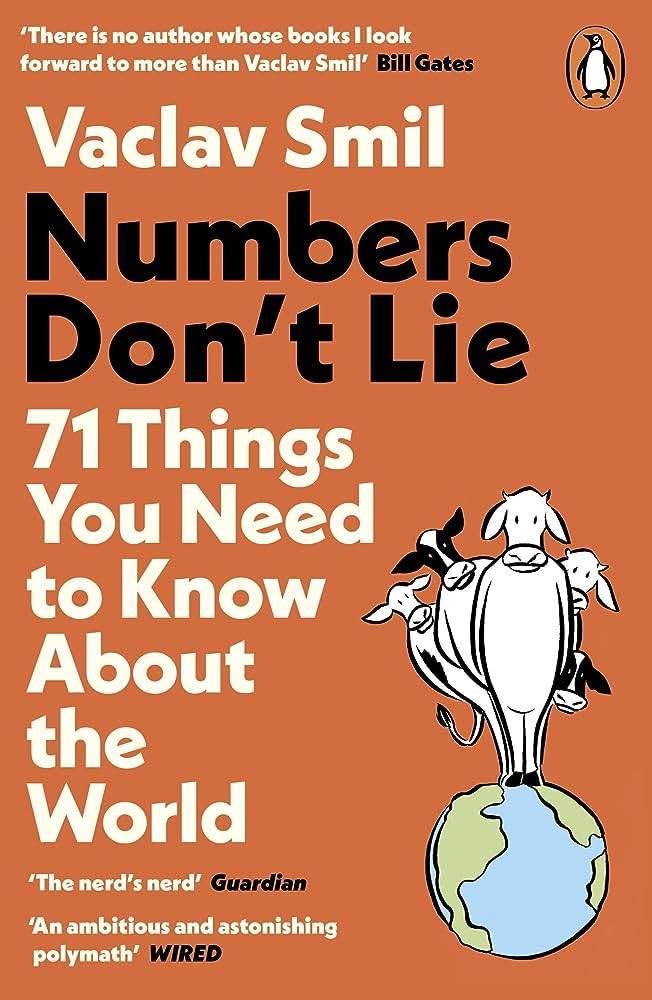- Tags:: 📚Books , Data Analysis
- Author:: Vaclav Smil
- Liked:: 2
- Link:: Numbers Don’t Lie: 71 Stories to Help Us Understand the Modern World. – Vaclav Smil
- Source date:: 2021-05-04
- Finished date:: 2023-09-30
- Cover::

Why did I want to read it?
It seemed like a good source on how to deal with complex data analysis:
this book is about getting the facts straight. But that is not as easy as it might seem: while the World Wide Web teems with numbers, too many of them are undated hand-me-downs of unknown provenence, often with questionable unit identifiers. For example, French GDP in 2010 was US $2.6 trillion: was that value in current or constant monies, and was the conversion from euros to dollars done using the prevailing exchange rate or purchasing power parity? And how would you know?
What did I get out of it?
Unfortunately, not much, I stopped reading it super early: it doesn’t deliver on its promise, which disappoints me [considering Bill Gates loves it]([What sweat, wine, and electricity can teach us about humanity | Bill Gates (gatesnotes.com).
It’s a collection of random trivia, with not much emphasis on the numeric analysis, sources of data or anything like that.
To understand what is really going on in our world, next we must set the numbers in the appropriate contexts: historical and international. (p. xii)
True comprehension of many numbers (individually or part of complex statistics) requires a combination of basic scientific literacy and numeracy. (p. xiii)
Money presents different challenges. Most people appreciate relative levels of their incomes or savings, but historic comparisons on a national and international level must be adjusted for inflation, and international comparisons must account for fluctuating exchange rates and changing purchasing powers. (p. xiv)
The good news is that mastering much of this is easier than most people think. (p. xv)